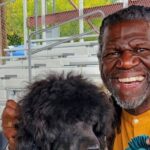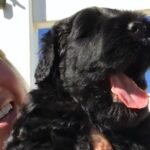Interview with a Toy Group Breeder Debarah Billings
Where do I live? How many years in dogs? How many years as a breeder?
Debarah Billings: I live in Blountville, Tennessee. I have always been an animal lover and have owned dogs and horses for the majority of my adult life. I started my Biewer Terrier breeding program in 2009 after falling in love with my discovery of this unique and fascinating breed in 2006.
What is my kennel name? How many dogs do I currently keep?
Debarah Billings: My kennel name is Windsong Biewer Terriers. I currently have six Biewer Terriers included in my breeding program. I do genetic health-testing as well as breed-specific OFA testing. I keep a select few show prospect puppies for future breeding plans.
Which show dogs from the past have been my noteworthy winners?
Debarah Billings: GCHS Windsong’s Somethin’ To Talk About, “Rumor,” was our first AKC Champion and Grand Champion during 2021, the inaugural year for the Biewer Terrier’s fully recognized status with AKC. She holds the record of No.1 All-Breed 2021. Rumor won Best of Opposite at the breed’s very first Westminster Kennel Club Dog Show in 2021. She also took Best of Breed at the prestigious Morris and Essex show, the National Dog Show, and Royal Canin’s AKC National Championship. Rumor is the only Biewer Terrier to have won the Toy Group, with a total of three Group Firsts. Windsong Biewer Terriers had a total of eight new Champions for 2021, which includes different owners/handlers.
Which have been my most influential sires and dams?
Debarah Billings: Windsong’s Serious In Sapphires CM and Sopranno Mini Mafija have produced a significant number of champions for our program.
Can I talk a bit about my facilities? Where are my puppies whelped? How are they raised?
Debarah Billings: I have a room with everything needed, dedicated to whelping puppies. The dam and her babies then go to my bedroom for constant monitoring for the first three weeks and then move to an area with more freedom for mom.
What is my “process” for selecting show puppies? At what age do I make my decisions?
Debarah Billings: I evaluate my litter at 8 weeks of age and again at 12 weeks. At this age, it gives a better estimate of mature weight. I keep the puppies that pass the 12-week evaluation to see how they develop.
How do I prepare my pups for the show ring? Does my breed require any special preparation?
Debarah Billings: We do early socialization and attend handling classes when available. If shows offer 4-6 Month Beginner Puppy, it is a great opportunity to introduce the youngster to the show environment.
Is my breed well-suited to be a family dog? Who are the best candidates to own my breed?
Debarah Billings: We recommend finding a breeder who will also mentor if you decide to obtain a Biewer Terrier. They are wonderful companions as well as eager to please. Several owners take these dogs on long walks and even compete in agility trials with success.
Do I feel that my breed is supported by a sufficient number of preservation breeders?
Debarah Billings: I would hope that as the breed’s popularity is exploding, we will gain more preservation breeders for the future health and longevity of the Biewer Terrier.









